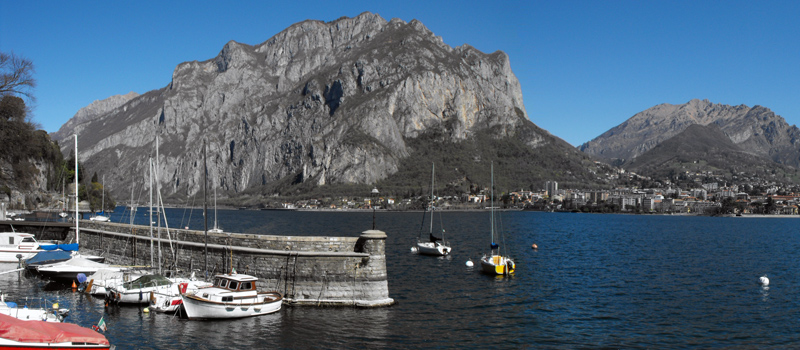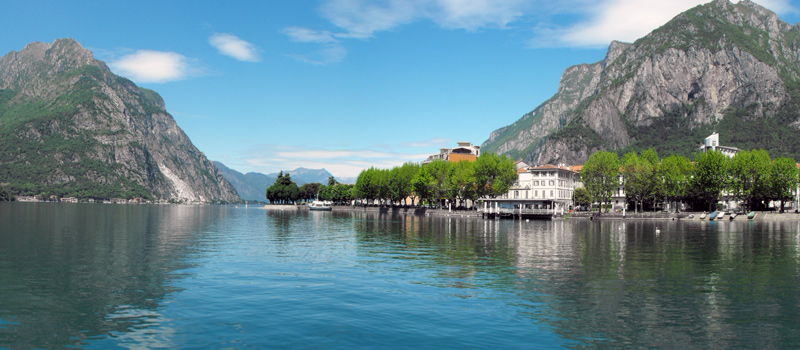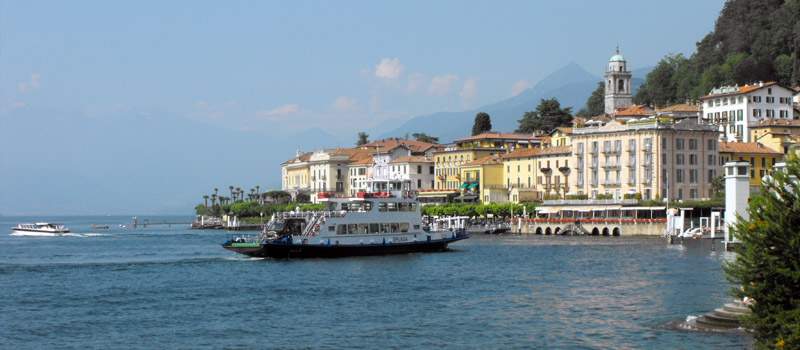
The town of Malgrate stands on the Lecco side of Lake Como, extended across an amazing panoramic location facing city of Lecco, and connected to it by the Azzone Visconti bridge. The initial settlements in these areas date back to the Roman era, but the earliest documentary sources date back to the 12th century, during the 10-year war between Como and Milan. At the time, near the San Dionigi fortress, stood a small fortress called the San Grato Fort, placed under the control of the people of Como. On night, in 1126, the Fort was attacked by soldiers from Lecco and Milan, the conflict was terrifying, the people of Como caught the worst of it and were massacred. The fort was destroyed, tradition says that after this tragic event, the name Grato became Malgrato and the later Malgrate.
In the 14th and 15th centuries, Malgrate was passed to the government of the Visconti family, and later of the Sforza, in 1532 the village was conquered by the notorious Gian Giacomo Medici, called il Medeghino. It has always been a town of fisherman and boatmen. Already during the 18th century, Malgrate was a vacation town frequented by Milan’s upper class. Of these prestigious residences, we remember, Palazzo Agudio, today the seat of the Municipality, the 18th-century Villa Bovara that was later transformed into the Reina family’s spinning mill, and Palazzo Bonanomi-Recalcati. During the 19th century, with the advent spinning mills for producing silk, for Malgrate began its industrial era.
Worth a mention among the religious buildings is the Parish Church of San Leonardo, built in the 16th century with 3 bell towers, and remodeled in Neo-classic style in 1815 upon the design of architect Giuseppe Bovara (1781 - 1873). There is also the Church of San Carlo al Porto, built at the end of the 17th century, inside it holds an interesting altarpiece depicting San Carlo with the Madonna and angels. The ancient church of Sant'Antonio Abate, erected during the 15th century, and later remodeled in Baroque style, with amazing decorations on the facade and inside the door. The famous inventor, Pietro Vassena (1897 – 1967) a Malgrate native, in 1948 with the Batiscafo C3, a submarine he designed and built, reached a depth of 412 meters along the stretch of lake that runs between Argegno and Nesso.

Lecco's fame is connected above all to Alexander Manzoni who, as a child, lived in the 18th-century villa of Caleotto (Manzoni Museum), and here was inspired when writing many pages of his book: I Promessi Sposi.
Lecco
Dried Shad (Agone), called Missoltini or Missultin, were at one time a precious food for inhabitants of Lake Como, the particular processing allowed them to be conserved for more than a year, excellent traditional Lake Como cuisine.
Lario Cuisine
Bellagio is Lario's central headland cape of Lario, by far one of the most beautiful tourist places, not only of Lake Como, but of the entire world. Its beauty has been praised, since the 16th century, by Italian and foreign visitors.
Bellagio